
Groups 1-3 (PK, ST, OL, RB)
Arrival: Tuesday
Measurements: Wednesday
Bench press: Thursday
On-field drills: Friday

Braden Smith could be one of the stars on Friday
Offensive linemen
For the last two years we’ve used a formula called TEF to measure explosive physical traits. It proved to be an accurate way of predicting which offensive linemen the Seahawks might be targeting. In light of Tom Cable’s departure (due to his influence on the system) it’s unclear if it’ll be quite as useful in the future. Either way, it’s still a good way to compare the offensive and defensive linemen and measure explosive physical traits.
Why are they important? Pat Kirwan — a confidant of Pete Carroll — tells us why in this piece:
Every time a ball is snapped to start a play there is a critical element of explosiveness that takes place. When two players collide in an attempt to physically dominate each other, the athlete with the edge in explosiveness has the best chance to win the confrontation. It could be a blocker vs. a tackler, a tackler vs. a ball carrier, or many other examples of winning at the point of contact.
Explosiveness is defined in the dictionary as a violent release of energy, a sudden outburst. Football is a series of explosions. How do you measure it in athletes trying to play NFL football?
Take the vertical jump, standing broad jump and the bench press test results and add them together. If the combined score is over 70 there is a reason to consider the candidate at some point in the draft process for his explosiveness.
Kirwan’s formula is flawed because it diminishes the impact of the broad jump. A superb 9-7 only achieves a 1.2 point advantage over a below par 8-5. That’s why we developed our own formula (TEF) to essentially do what Kirwan intended — measure explosive traits equally and emphasise their combined importance.
Let me make this clear (you’d be shocked how often I have to highlight this) — TEF is not an attempt to determine who is a good or bad offensive linemen. It’s merely a calculation to judge explosive traits. And while that’s only one part of any evaluation — it’s still a relevant part of analysing a prospect or draft class.
For more on TEF, including a breakdown of the calculation, click here.
Key tests
Vertical, Broad, Bench
Ideal size
6-3/6-5, 305-320lbs, 35 inch arms, +31 inch vertical, +9’ broad, +30 bench reps
Interesting note
For a long time we’ve been discussing the league-wide problem of the athletic discrepancy between college O-lines and D-lines. The best athletes are choosing to play defense. TEF helped us define the problem. At the 2016 and 2017 combines, there were a total of 56 ‘explosive’ defensive linemen (explosive = a score of 3.00 or higher). In comparison, there were only nine explosive offensive linemen. It’s a problem that simply isn’t being addressed and the NFL is suffering as a consequence.
The best drill to watch
The mirror drill. Two linemen stand opposite each other, with one acting as ‘the rabbit’. He’ll move around and change direction and it’s up to the participant to stick. It’s an important test of footwork, agility, mobility, balance, control and stamina. It’s also a good gauge of pass protection skills. Germain Ifedi boosted his stock in 2016 when he performed well in this drill working opposite Laremy Tunsil.
Three names to watch
Billy Price (Ohio State), Braden Smith (Auburn), Austin Corbett (Nevada)
Positional notes
This appears to be a strong year for interior offensive linemen but a relatively weak year at tackle. Georgia’s Isaiah Wynn and Arkansas’ Frank Ragnow are not performing due to injury. Auburn’s Braden Smith is a name to watch — he’s expected to have an excellent work out and could be one of the stars of the combine. Ohio State’s Billy Price could surprise people with the way he tests. Pittsburgh’s Brian O’Neill struggled at the Senior Bowl but as a former tight end could boost his stock in Indianapolis.
Importance to the Seahawks
They’re likely to prioritise repairing the running game and with an opening at guard, a new O-line coach and the possibility of changes — spending another early pick on an interior offensive linemen appears likely.

The big RB story is clear — how explosive is Nick Chubb after his knee injury?
Running backs
It’s clear the Seahawks have a preferred profile and as a consequence, it’s been relatively simple to get a grasp on the running backs they like.
Explosive traits, physicality, size (approx. 220lbs) and running style are the key aspects. Christine Michael (220lbs), C.J. Prosise (220lbs), Robert Turbin (222lbs), Alex Collins (217lbs) and Spencer Ware (228lbs) all had similar size, height and athletic profiles.
Following the 2016 and 2017 combines, we were able to use Seattle’s draft history to identify these possible targets:
2016:
C.J. Prosise — 6-0, 220lbs, 35.5 inch vert, 10-1 broad
Kenneth Dixon — 5-10, 215lbs, 37.5 inch vert, 10-8 broad
2017:
Christopher Carson — 6-0, 218lbs, 37 inch vert, 10-10 broad
Brian Hill — 6-0, 219lbs, 34 inch vert, 10-5 broad
Alvin Kamara — 5-10, 214lbs, 39.5 inch vert, 10-11 broad
Joe Williams — 5-11, 210lbs, 35 inch vert, 10-5 broad
They drafted Prosise and Carson. It’s interesting to note how limited the ‘explosive’ options were in the two previous drafts. We’ll see if this class is deeper and whether the Seahawks will stick to their preferred physical profile or go in a different direction (note: they’d have to deviate to draft Ronald Jones II).
Key tests
Vertical, Broad
Ideal size
5-11, 220lbs, +36 inch vertical, +10 broad
Interesting note
The Seahawks haven’t drafted for speed at the position in the Pete Carroll era. They’ve consistently taken running backs in the 4.47-4.55 type of range. Christine Michael (4.54), C.J. Prosise (4.48), Robert Turbin (4.50) and Chris Carson (4.58) were explosive rather than fast. Explosive suddenness and power over straight line speed appears to be the order of the day.
The best drill to watch
The footage will be limited but absolutely it’s the coverage of the vertical and broad jump. Explosive traits are key. It’s nice to see the running backs cutting against pads while showing body control and quickness in the open field. Very few positions though rely on explosive power like running back.
Three names to watch
Nick Chubb (Georgia), Ronald Jones II (USC), Kerryon Johnson (Auburn)
Positional notes
How many players fit Seattle’s prototype? That’s question number one before anything else. Saquon Barkley will be highly explosive (guaranteed) but is he as fast as everyone says? Derrius Guice isn’t likely to have a great combine but can he do a lot better than his seriously underwhelming SPARQ performance? Is Ronald Jones II as fast as Jamaal Charles (4.38)? Is Sony Michel more explosive than he was at SPARQ (he needs to be)? With no previous testing info, how explosive/athletic is Kerryon Johnson? Likewise — is Rashaad Penny special or a byproduct of his environment? The most interesting moment though will be Nick Chubb’s performance. At the Nike SPARQ combine in 2013 he had one of the all-time great tests, showing world class athleticism and explosion. He’s since suffered a serious knee injury so it’ll be fascinating to see how different he is physically. Don’t be shocked if he’s back to nearly full power and blows the roof off Lucas Oil Stadium.
Importance to the Seahawks
Simply put, they have to tap into this running back class. Seattle’s running game has collapsed and while the national media is focusing on defensive backs galore — the big need for this team is to finally get the running game going again.
Groups 4-6 (QB, WR, TE)
Arrival: Wednesday
Measurements: Thursday
Bench press: Friday
On-field drills: Saturday
Quarterbacks
There’s little point focusing too much on the quarterbacks here unless it’s to keep an eye on who Arizona might trade up for. We’ll see if the big names work out (Darnold, Rosen, Allen, Mayfield, Jackson). Arm strength and accuracy are judged in the throwing drills and it feels like there’s a big opportunity for these players to move up boards.
Interesting note
The Seahawks have only drafted one quarterback in the Pete Carroll era (Russell Wilson).
Three names to watch
Josh Allen (Wyoming), Sam Darnold (USC), Lamar Jackson (Louisville)
/cdn.vox-cdn.com/uploads/chorus_image/image/51819767/usa_today_9669280.0.jpg)
Auden Tate could be a big bodied red zone target to replace Jimmy Graham
Wide receivers
Kenny Lawler (4.64) and Chris Harper (4.50) are the only receivers they’ve drafted who didn’t run in the 4.4’s. Paul Richardson (4.40), Golden Tate (4.42), Tyler Lockett (4.40), Kris Durham (4.46), Kevin Norwood (4.48), Amara Darboh (4.45) and David Moore (4.42) all cracked the 4.4’s. Kris Durham (216lbs), Chris Harper (229lbs), Kenny Lawler (203lbs), Amara Darboh (214lbs) and David Moore (219lbs) are the only five receivers drafted that were +200lbs.
They might be on the look out for a bigger target this year, especially if Jimmy Graham moves on. Some of his red zone production will hopefully be shifted onto the running game but having found an effective weapon there, they’ll want at least one big body to throw at with a short field.
Interesting note
The best non-FA athlete Seattle has acquired in the Carroll/Schneider era was an UDFA — Ricardo Lockette. He ran a 4.41, had a 39-inch vertical and a 6.76 three-cone. He was also well-sized at 211lbs with 33.5-inch arms. The Seahawks have been comfortable bringing in high-ceiling UDFA receivers, finding success with Lockette, Doug Baldwin and Jermaine Kearse. If they’re really going ‘back to the future’ to reload this team, they might be looking for another cheap receiver to replace some of the ‘bigger name’ targets of recent years.
Key test
Forty, vertical, catching drills (proper technique)
Ideal size
6-1, 210lbs, 4.45 forty
The best drill to watch
Any drill that clearly shows the receiver’s catching technique. It’s extremely important. Only when you watch the drills do you realise how many bad habits these receivers have. You want to see a wide out cupping his hands and showing them to the ball. No alligator arms, no fighting the ball or snatching at it. Watch the downfield throws too and see who is good at high pointing the football, showing body control.
Three names to watch
Javon Wims (Georgia), Auden Tate (Florida State), Keke Coutee (Texas Tech)
Positional assessment
It’s a pretty ‘meh’ group of receivers overall. The value in the early rounds isn’t great and is likely to be better between rounds 3-7. LSU’s D.J. Chark was one of the standout performers at the Senior Bowl. It’ll be interesting to see how Washington’s Dante Pettis performs. Is Maryland’s D.J. Moore slow? He’s a tenacious, physical receiver but is he quick enough? How fast is T.Y. Hilton clone Keke Coutee? How will some of the bigger guys like Auden Tate, Javon Wims, Marcell Ateman, Simmie Cobbs Jr and Jaleel Scott perform? Can USC’s Steven Mitchell show well and can Anthony Miller ease some of the concerns about his athleticism and injury history? Plus how will teams view problem child Antonio Callaway during interviews? He’s immensely talented but can you trust him?
Importance to the Seahawks
With Paul Richardson a free agent, Tyler Lockett a year away from free agency and Amara Darboh having an ineffective first season, this could be a position of interest. The crop of free agent receivers could be more appealing but expect at least one wide out to be drafted. They could use a big, athletic target.
/cdn.vox-cdn.com/uploads/chorus_image/image/56826733/usa_today_10270965.0.jpg)
Dalton Schultz loves to block
Tight ends
The three tight ends Seattle’s drafted — Nick Vannett, Luke Willson and Anthony McCoy — are all quite different. Vannett was considered a throw-back style blocker with some pass-catching potential. Willson ran a 4.51 at his pro-day with a 38-inch vertical. McCoy ran a 4.78 but was familiar with Carroll and had great size and big mitts.
This is one of the more unpredictable positions to judge for Seattle. They tried to turn Jimmy Graham into the ‘complete tight end’ but settled on making him a red zone machine in 2017. If Graham moves on, do they look for an athletic replacement or another ‘Y’ tight end?
This TE class isn’t like last years. It’s possible we won’t see a tight end drafted in the first two rounds. We might not see a truly dynamic athlete like O.J. Howard, David Njoku or George Kittle either.
Key test
Vertical, Broad, Bench, Forty
Ideal size
6-5, 250-265lbs, +34-inch arms, +10-inch hands
Interesting note
In 2010 when Jimmy Graham was drafted in round three by the Saints — the following players left the board between pick #95 and Seattle’s next pick at #111: Everson Griffen, Alterraun Verner, Darrell Stuckey and Geno Atkins. The Seahawks took Kam Chancellor at #133. The 2010 draft had some depth.
Best drill to watch
There’s very little to gain by watching the blocking drills so like the receivers, check out a players catching technique. Is he cupping his hands and showing to the football, or is he fighting the ball?
Three names to watch
Dalton Schultz (Stanford), Durham Smythe (Notre Dame), Will Dissly (Washington)
Positional assessment
If the Seahawks are looking for an athletic replacement for Graham, players like Ian Thomas at Indiana or Mike Gesicki at Penn State could be in play. For the most part this is not a good class of blocking tight ends. Unsurprisingly, the two schools that still utilise orthodox ‘Y’ tight ends and focus on the running game have produced two possible options. Stanford’s Dalton Schultz is a tremendous blocker especially in the running game and could easily be a Seahawks target. How long are his arms and how athletic is he? Notre Dame’s Durham Smythe had an excellent Senior Bowl and is also an adept blocker. He had short arms at the Senior Bowl but how accurate was the measurement? These measurements have a habit of changing at the combine. Those are the two names I’ll be focusing on the most, alongside Washington’s Will Disly and Florida State’s Ryan Izzo.
Importance to the Seahawks?
Very important. At the moment the only contracted tight ends in Seattle are Nick Vannett and Tyrone Swoopes. Luke Willson could return but the writing appears to be on the wall for Jimmy Graham. They could sign a free agent but another ‘Y’ tight end like Schultz or Smythe could be the order of the day in the middle rounds.
Groups 7-9 (DL, LB)
Arrival: Thursday
Measurements: Friday
Bench press: Saturday
On-field drills: Sunday

Josh Sweat is so athletic they even gave him a plaque
Defensive line
The Seahawks do appear to have defined preferences at each of the different positions. For example, Seattle hasn’t drafted a defensive lineman or EDGE rusher with sub-33 inch arms. Quinton Jefferson, Jordan Hill, Jaye Howard and Malik McDowell all tested superbly in the short shuttle (4.37, 4.51, 4.47 and 4.53 respectively). If they’re looking for a quicker, interior pass-rush option — this drill appears to be significant.
Twitchy athletes with great burst are their thing at DE/EDGE. The 10-yard split is clearly important. EDGE rushers Bruce Irvin and Cliff Avril ran 1.55 and 1.50 splits respectively. Anything in the 1.5’s is considered ‘elite’. If you’re looking for a possible LEO in this draft class then you need to be keeping an eye out for the 1.50-1.59 10-yard splits.
The splits are also important for inside/out rushers or interior pass rushers. Frank Clark was considered more of an explosive inside/out rusher and he ran a 1.69 split at 271lbs. Malik McDowell managed the same 1.69 split at 295lbs.
Dynamic quickness is a trend for EDGE players. Bruce Irvin (4.03) and Frank Clark (4.05) both ran incredible short shuttles. Cassius Marsh’s 4.25 and Obum Gwacham’s 4.28 were also really good.
There were serious concerns about McDowell’s effort and attitude but he put on a show at the combine. He’s 295lbs with great height (6-6) and length (35 inch arms) and ran a 4.85 with a 1.69 split. His three cone (4.53) was the same as Dalvin Cook’s.
Of all the positions not to overreact to, D-line might be one of them. For whatever reason, pass rushers seem to last. We spent a lot of time in 2011 talking about Justin Houston as a possible LEO target. He lasted into round three. A year ago Kansas State’s Jordan Willis had a fantastic workout and also lasted into round three. His 1.54 10-yard split was the best for a +250lbs player since Cliff Avril’s 1.50.
This is worth taking into account if someone like Rutgers’ Kemoko Turay has a great combine. He might get talked up a lot — but he could still last into the middle rounds for a team like Seattle in clear need of adding a LEO.
Key tests
Vertical, Broad, Bench, Short Shuttle, Three-cone, 10-yard split (forty)
Ideal size
DL — 6-2/6-4, 300-310lbs, +33 inch arms, +31 inch vertical, +9’ broad, 4.50 ss
LEO — 6-4, 250lbs, +33 inch arms, 1.50-1.59 10-yard split
Interesting note
The Seahawks have only drafted 5 players with a +140 SPARQ score. Christine Michael (150), Kevin Pierre-Louis (149) and Bobby Wagner (147) were the only three to beat Bruce Irvin (144) and Frank Clark (142).
Best drill to watch
Just absorb everything. The D-line drills are the most entertaining, most fan-friendly of all the combine events. The bag drills, the swim/rip drills, the club, the working in space. It’s a real show of the most explosive athletes in college football competing in one venue.
Three names to watch
Josh Sweat (Florida State), Vita Vea (Washington), Rasheem Green (USC)
Positional assessment
Rutgers Kemoko Turay and Georgia’s Lorenzo Carter are two LEO or SAM possibilities but both are working out with the linebackers. Is Bradley Chubb as impressive physically as his cousin Nick Chubb? How big is Tim Settle and how does he perform at his size? Florida State’s Josh Sweat had an incredible SPARQ workout and if he’s healthy, could be one of the stars of the weekend. Vita Vea will confirm his top-10 pick status when he runs a sub-5.00 forty. What shape is Arden Key in? Can Marcus Davenport secure a place in the top-20? How big/long is Maurice Hurst and what is his 10-yard split? What kind of athletes are Dorrance Armstrong and Jeff Holland? Is Sam Hubbard more than an average athlete? How much potential does Da’Shawn Hand possess? Can Tyquan Lewis and Andrew Brown, two Senior Bowl standouts, boost their stock? USC’s Rasheem Green could put on a show (his short shuttle should be epic) and how much potential does Taven Bryan truly have? There’s so much to discover with this group.
Importance to the Seahawks?
It depends what happens over the next few weeks. If they move on from Cliff Avril, Michael Bennett and Sheldon Richardson, this becomes a huge need area. And who knows what’s happening with Malik McDowell? At the very least it feels like they need to add a LEO.

If he runs a 1.5 10-yard split, Kemoko Turay could be a LEO candidate
Linebackers
The Seahawks have drafted a collection of freakish athletes at linebacker since 2010. Kevin Pierre-Louis, Korey Toomer, Malcolm Smith and Eric Pinkins all ran between a 4.44 and a 4.51 in the forty. KPL, Smith and Pinkins all jumped +39 inches in the vertical. Bobby Wagner was a 4.4 runner at his pro-day with a 39.5-inch vertical. Of the five players they’ve drafted with a +140 SPARQ score, Wagner, KPL and Bruce Irvin are included. Speed (forty yard dash) and explosive traits (vertical, broad) appear to be preferred.
That said, one of their big success stories since 2011 is K.J. Wright. He’s a 6-3, 246lbs bigger linebacker with incredible length (35 inch arms) but only 4.71 speed, a 34 inch vertical and a 10-0 broad. Wright might be the exception — a unique player with tremendous length and intensity.
It was interesting a year ago that Seattle avoided the linebacker position in the draft despite Pete Carroll’s insistence that they needed to add some youth at the position. The 2017 combine didn’t produce many exceptionally quick or unique athletes. Instead they turned to free agency. It’s highly possible they will now review this position again, assuming the options are better in what looks like a much deeper and more impressive linebacker class.
Key tests
Forty yard dash, Three-cone, Vertical, Broad, short shuttle
Ideal size
+6-0, 230-240lbs, 4.4-4.5 forty, 6.70 three-cone, +10’ broad, 4.20-4.35 short shuttle
Interesting note
Bobby Wagner played 99.35% of the defensive snaps in 2016 and K.J. Wright played 97.41%. We asked a year ago how sustainable this was and both players missed time or played through injuries in 2017. Wagner tallied 93.08% of the snaps and Wright 87.07%. They need some depth and help at the position.
Best drill to watch
The short shuttle results. We highlighted a year ago how important it might be for the Seahawks. Quickness and change of direction is vital at linebacker.
Three names to watch
Kemoko Turay (Rutgers), Lorenzo Carter (Georgia), Darius Leonard (South Carolina State)
Positional assessment
It’s a really impressive group this year. Tremaine Edmunds and Leighton Vander Esch could secure top-20 placings with a big performance. Roquan Smith will need to test well at his expected size (6-0, 225lbs) to get into a similar range. Alabama’s Rashaan Evans knows he’ll secure a first round slot with a good combine. Texas’ Malik Jefferson had a sensational SPARQ combine and could be one of the stars again in Indianapolis. South Carolina State’s Darius Leonard was a standout at the Senior Bowl and could further boost his stock with a great workout. Ohio State’s Jerome Baker needs to run well at 6-1 and 225lbs. Washington’s Keishawn Bierria might want to send a ‘don’t forget about me’ message to the league. Two other players to watch out for could be SAM/LEO prospects. Rutgers’ Kemoko Turay will test with the linebackers but is more of an EDGE rusher. He looks like a LEO candidate and his 10-yard split will be vital. Georgia’s Lorenzo Carter is more of a SAM/LEO and he’s extremely explosive (40 inch vertical is possible). However, he isn’t the quickest so his 40/10 will be key.
Importance to the Seahawks?
They need to support Wagner and Wright while also looking at the SAM/LEO position. This is a really good year for the Seahawks to add some much needed young talent to the linebacker position.
Groups 10-11 (DB)
Arrival: Friday
Measurements: Saturday
Bench press: Sunday
On-field drills: Monday

Kevin Toliver has great size/length and is a former 5-star recruit
Cornerback
A year ago this was the highlight of the combine. The cornerback class was the talk of the NFL. In 2018 that most certainly isn’t the case. It’s a pretty average looking group.
By now everyone knows what the Seahawks like in a cornerback. Every corner drafted in the Pete Carroll era has had 32 inch arms. Those players are generally physical and tall and take pride in defending the run.
We’ve previously discussed the importance of wingspan too. Wingspan is defined as the length between the tip of your middle finger on one outstretched arm to the other. The average NFL cornerback has a wingspan of 75.5 inches (31.5 inch arm length).
Up until last year it felt like wingspan might be equally as important as arm length in Seattle. Here’s the arm length and wingspan data for some of Seattle’s draftees, acquisitions and starters since 2010:
Richard Sherman — 32 (arms) 78 (wingspan)
Brandon Browner — 33 (arms) 80 (wingspan)
Byron Maxwell — 33.5 (arms) 77.5 (wingspan)
Jeremy Lane — 32.5 (arms) 78 (wingspan)
Tye Smith — 32 (arms) 78 (wingspan)
DeAndre Elliott — 32 (arms) 77.5 (wingspan)
Neiko Thorpe — 31 3/4 (arms) 78 1/2 (wingspan)
Stanley Jean-Baptiste — 32 3/8 (arms) 78 3/8 (wingspan)
Pierre Desir — 33 (arms) 77.5 (wingspan)
In 2017 they drafted Shaq Griffin in round three. He has 32 3/8 inch arms but only a 74 3/4 inch wingspan, so this was quite a difference compared to some of the other corners. Generally speaking though, they might stick to a better than average wingspan.
Why is length so important? 100% of multiple first team All-Pro cornerbacks drafted since 1998 have +32 inch arms.
Short-area quickness also seems to be important. The short shuttle tests lateral quickness, explosion in short areas, body control and the ability to change direction quickly.
In this visual demonstration of the drill, Mike Mayock states:
“It’s important for literally every position. Why? For the little guys it’s obvious. Quickness, acceleration, change of direction. How about the big guys? Can they bend? Are you a natural bender or are you a heavy-legged waist bender? A great time for a defensive back is a 4.2.”
If a great time is a 4.2, it’s fair to assume anything quicker than a 4.00 is exceptional.
Since 2010, only four CB’s have run a sub-4.00 short shuttle and measured with 32 inch arms:
2017 — Kevin King (3.89)
2016 — DeAndre Elliott (3.94)
2015 — Byron Jones (3.94), Tye Smith (3.96)
2010-2014 — No qualifiers
The Seahawks drafted Smith and signed Elliott. Short-area quickness and great length is a rare combination so any possible day three prospects with these physical traits will likely be on the radar.
Here are the short shuttle times for drafted/UDFA cornerbacks in Seattle:
DeAndre Elliott — 3.94
Tye Smith — 3.96
Jeremy Lane — 4.14
Shaq Griffin — 4.14
Deshawn Shead — 4.23
Brandon Browner — 4.24
Richard Sherman — 4.29
Tharold Simon — 4.31
Byron Maxwell — 4.49
Key tests
Three-cone, Vertical, measurements (arm length), short shuttle
Ideal size
+6-1, 195lbs, +32-inch arms, 4.50 forty, +35-inch vertical
Interesting note
Speed previously didn’t appear to be crucial but it might’ve been the difference for Shaq Griffin. Five of Seattle’s six drafted cornerbacks before 2017 ran between a 4.47 and a 4.56 in the forty yard dash. Griffin ran a 4.38 and they drafted him earlier than any other cornerback in the Pete Carroll era.
Best drill to watch
The backpedal drill. Watch to see how the cornerback transitions and whether it’s effortless. Do they have loose hips and do they explode out of their break? Is their footwork smooth or clunky? Are they laboured in any way or does it just look natural?
Three names to watch
Kevin Toliver (LSU), Holton Hill (Texas), Brandon Facyson (Virginia Tech)
Positional assessment
LSU’s Kevin Toliver has a reputation for being a bit ego-driven and he didn’t live up to his recruitment hype. Yet he’s perfectly sized at 6-3 and 204lbs and he’s a former 5-star recruit. With the right type of guidance he could be a nice project for Seattle’s staff. Texas’ Holton Hill, Virginia Tech’s Brandon Facyson, Boston College’s Isaac Yiadom, Stanford’s Quenton Meeks and Auburn’s Carlton Davis could also fit Seattle’s size profile. We’ll post a full list of the cornerbacks that fit the bill for the Seahawks in terms of size/length before the CB workouts.
Importance to the Seahawks?
With Richard Sherman’s future in question and the possibility of major change coming on defense, it seems likely the Seahawks will do what they nearly always do — draft a corner on day three and coach them up.

Jessie Bates III plays with discipline and range
Safety
After hitting on Earl Thomas and Kam Chancellor in 2010, Seattle hasn’t had much success drafting for the safety position. Ryan Murphy, Winston Guy and Mark LeGree have come and gone. Delano Hill and Tedric Thompson didn’t see much action in 2017 despite injuries to Earl Thomas and Kam Chancellor.
There’s a real mix of physical profiles too. Thomas (31 1/4) and Legree (30 1/4) have short arms so the 32-inch test isn’t necessary here but Guy had great arm length (33). Murphy ran a 4.48 at his pro-day with an impressive 39-inch vertical but Legree (4.59) and Guy (4.70) didn’t run fast times (Legree only had a 31-inch vertical too). Hill ran a 4.47 but Thompson managed only a 4.60. Overall it’s hard to determine a Seahawks ‘type’ with these numbers. The only safety they’ve drafted in the first two rounds (Earl) is a tremendous athlete. He ran a 4.37 at his pro-day after pulling a hamstring running the forty at the combine (while still managing an official 4.49).
The 2018 draft class at safety is a little overrated in the national media. Minkah Fitzpatrick is regularly mocked in the top-five but is more likely to go in the 10-15 range. Derwin James is physically explosive and looks the part but didn’t make many game-tilting plays for Florida State. Deshon Elliott is also a little bit overrated and Ronnie Harrison, while perfectly solid and sound, doesn’t have an outstanding or unique aspect to his game.
Key drills
Forty yard dash, Three-cone, Vertical, Broad
Ideal size
+6-0, 200-220lbs, 4.4 forty, +39-inch vertical, +10-5 broad jump
Interesting note
The Seahawks are at a bit of a crossroads at the position. They might need to replace Earl Thomas and Kam Chancellor. They might re-sign Bradley McDougald and extend Thomas’ contract. They could also look at Eric Reid in free agency. So they essentially could be going into this draft needing to bring in at least one, if not two starters. Or they might be able to ignore the safety class altogether.
Best drill to watch
Any of the drills requiring the safety’s to close in space and show off their open-field quickness. If they’re possibly moving on from Earl Thomas, they’re going to need some speed in the secondary.
Three names to watch
Jessie Bates III (Wake Forest), Terrell Edmunds (Virginia Tech), Justin Reid (Stanford)
Positional assessment
Wake Forest’s Jessie Bates III might be the best option if they suddenly need to draft a free safety. Make sure to keep an eye on his workout. There are two famous brothers to watch too. Terrell Edmunds is Tremaine Edmunds’ brother and has good size to potentially work at strong safety. Meanwhile Stanford’s Justin Reid is the brother of San Francisco safety Eric Reid. A lot of eyes will be on Derwin James and Minkah Fitzpatrick. My personal predictions are — James will be extremely explosive with outstanding size but not quite as quick as people expect, while Fitzpatrick will have one of the better performances among DB’s.
Importance to the Seahawks?
It all depends on what happens at the start of the new league year. Do they trade Earl Thomas? Do they re-sign Bradley McDougald? Do they sign a free agent? Does Kam Chancellor retire? There’s so much that needs to be determined here.
Further reading
Why the Seahawks aren’t as focused on SPARQ as you might think
The top performers in each drill position-by-position since 2006
What is TEF?
TEF results for the O-line (2017)
TEF results for the D-line (2017)
The top-25 prospects in the 2018 draft broken into tiers
Seahawks off-season: Priorities, predictions & possibilities
Pete Carroll is scheduled to speak to the media on Thursday at 9am PST. John Schneider will conduct a press conference on Friday at 8am PST.
As usual we’ll be live-blogging during each day of the combine with instant analysis and a review at the end of each workout. I hope you’ll join us!
You can now support Seahawks Draft Blog via Patreon by clicking the tab below.
Become a Patron!

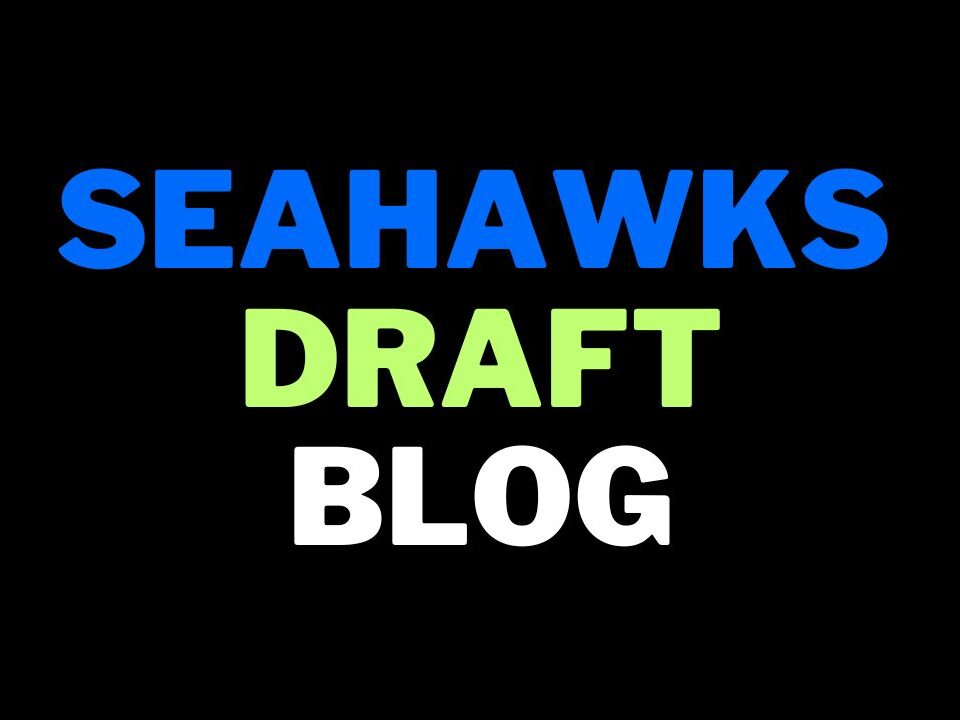


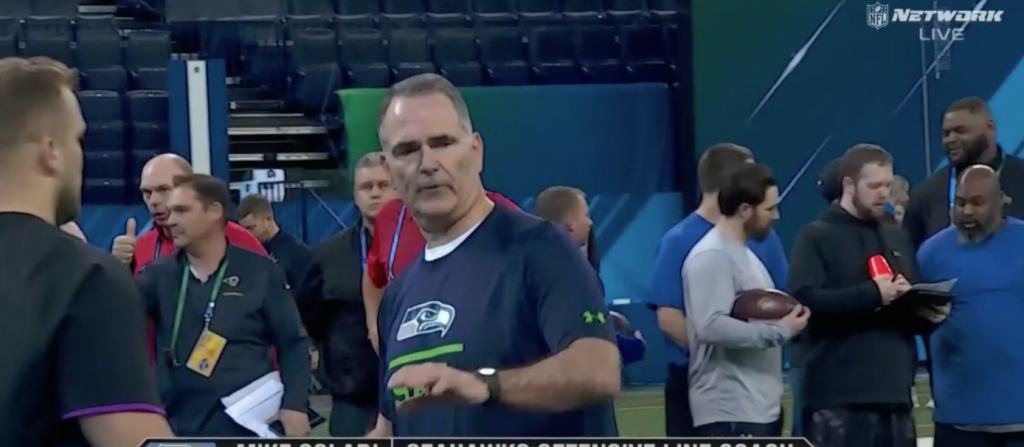
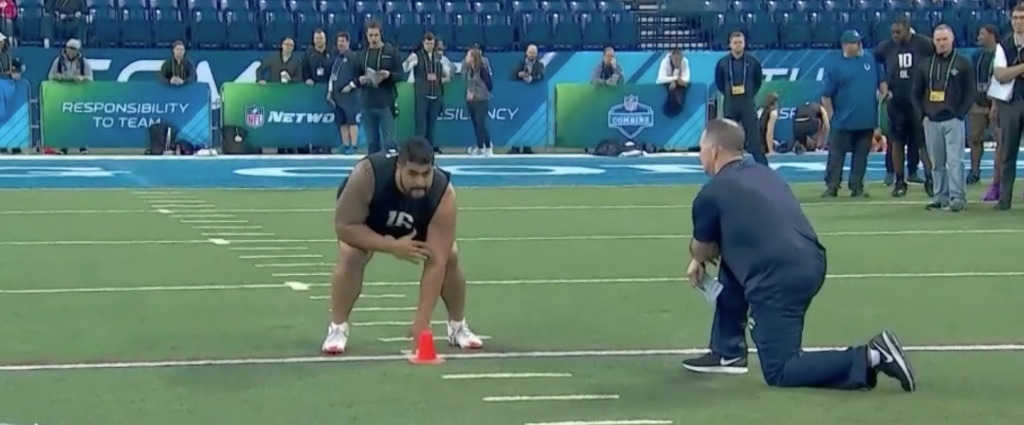
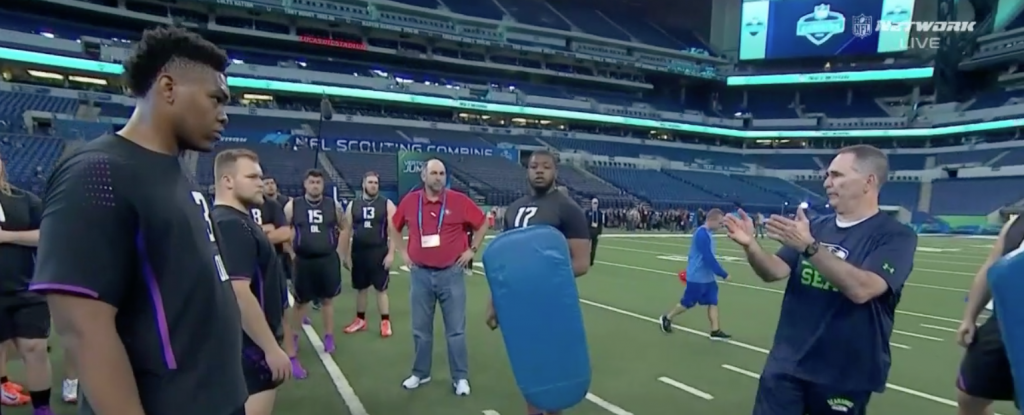
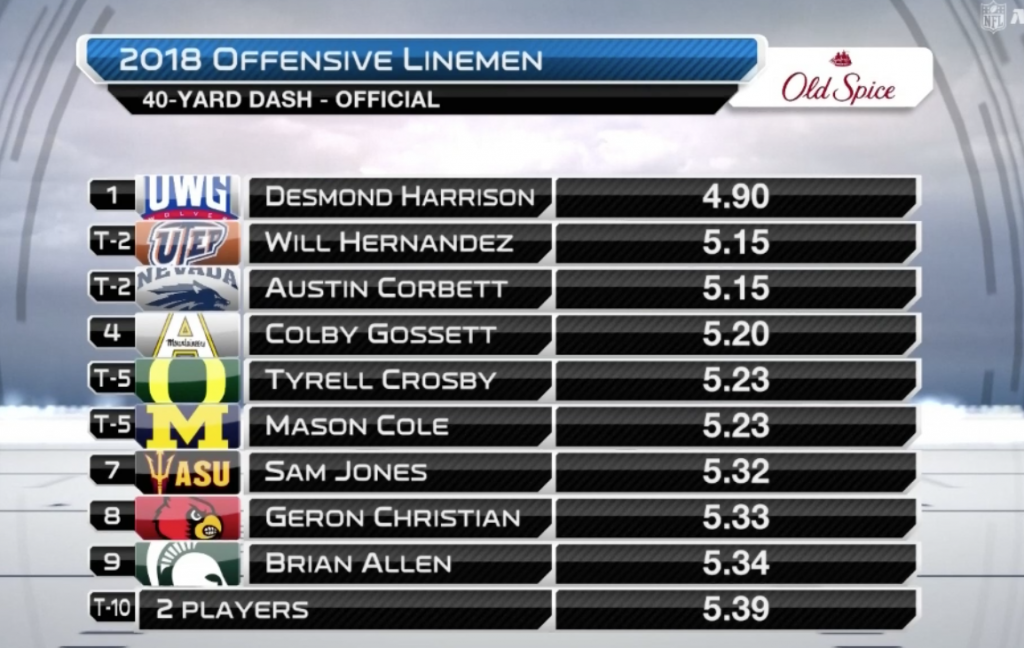
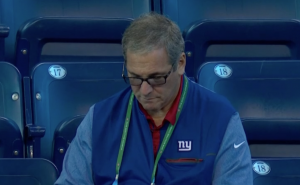
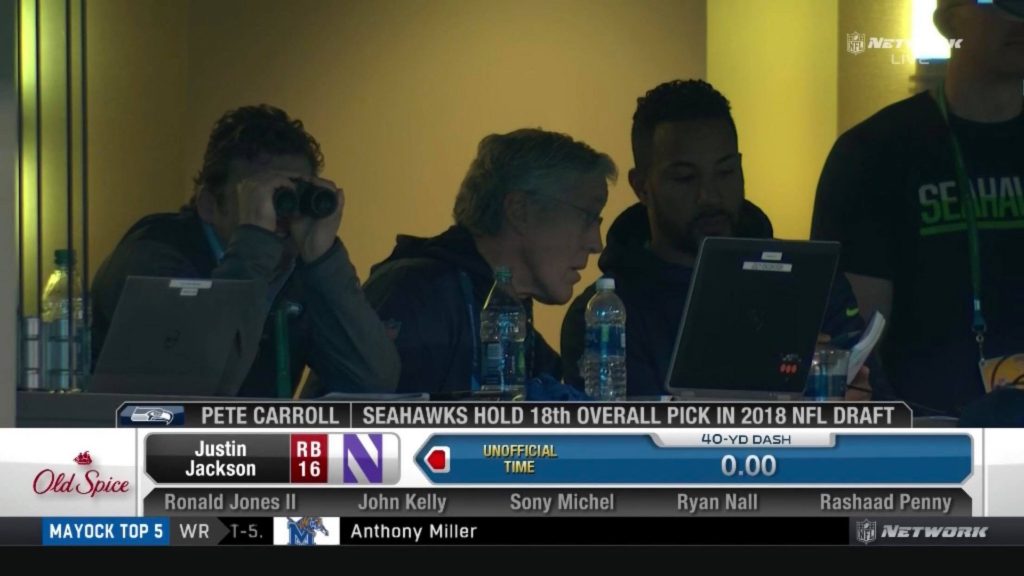


/cdn.vox-cdn.com/uploads/chorus_image/image/51819767/usa_today_9669280.0.jpg)
/cdn.vox-cdn.com/uploads/chorus_image/image/56826733/usa_today_10270965.0.jpg)




